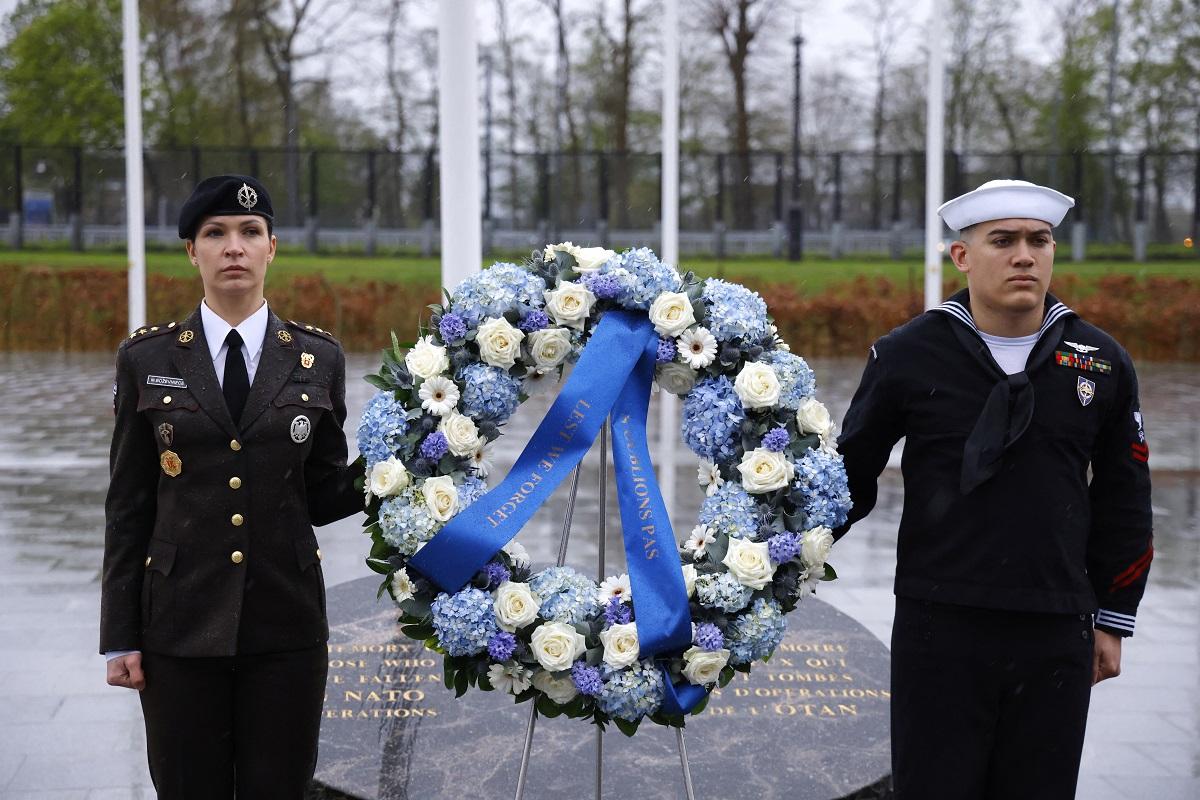NATO marks 75th anniversary with flags, cake, message to US on Ukraine
By ANDREW GRAY and JOHN IRISH, Reuters Published April 4, 2024 5:17pm BRUSSELS — NATO foreign ministers celebrated the 75th anniversary of their alliance on Thursday with flags, cake and marching bands, while its secretary general reminded the United States that it needed its allies more than ever as the Ukraine war enters its third year. […]


By ANDREW GRAY and JOHN IRISH, Reuters
BRUSSELS — NATO foreign ministers celebrated the 75th anniversary of their alliance on Thursday with flags, cake and marching bands, while its secretary general reminded the United States that it needed its allies more than ever as the Ukraine war enters its third year.
The alliance’s 32 member states agreed on Wednesday to start planning for a greater role in coordinating military aid to Ukraine to help it battle Russia in Europe’s biggest conflict since World War Two and show its unity as Ukraine awaits a package worth some $60 billion that remains stalled in the U.S. Congress.
On the second day of a meeting in Brussels, the ministers marked the signing in Washington on April 4, 1949, of the North Atlantic Treaty that established the transatlantic political and military alliance.
“Europe needs North America for its security,” Stoltenberg said at a ceremony at NATO’s headquarters in Brussels.
“At the same time, North America also needs Europe. European allies provide world-class militaries, vast intelligence networks and unique diplomatic leverage, multiplying America’s might.”
European leaders, who make up the bulk of NATO members, are anxious not only about NATO’s future if former U.S. President Donald Trump beats incumbent President Joe Biden in November, but also about the ongoing hold-up to the Ukraine aid package in Congress as Republicans demand border-security measures in return for passing the bill.
NATO began with 12 members from North America and Europe, founded in response to growing fears that the Soviet Union posed a military threat to European democracies.
At its heart is the concept of collective defence, the idea that an attack on one member is considered an attack on all, giving U.S. military protection to Western Europe.
Seventy-five years on, it has 32 members and has retaken a central role in world affairs after Russia invaded Ukraine in February 2022, leading European governments to view Moscow once more as a major security threat.
NATO’s two newest members, Finland and Sweden, joined in direct response to Russia’s invasion of Ukraine.
“Democratic nations, free people chose to join (NATO) unlike how Russia expands by annexation or illegal aggression,” Finnish Foreign Minister Elina Valtonen said.
Russia said on Wednesday that NATO had returned to a Cold War mindset. Foreign Ministry spokeswoman Maria Zakharova told reporters NATO had no place in the “multipolar world” Moscow says it seeks to build to end US dominance.
“NATO’s biggest battles to fight are still in the future, and we have to be ready for them,” said Lithuanian Foreign Minister Gabrielius Landsbergis.
Long-term plan for Ukraine help
NATO ministers agreed on Wednesday to start planning for a greater NATO role in coordinating security assistance and training for Ukraine.
Under a proposal by Stoltenberg, NATO would take over work done by a US-led ad-hoc coalition known as the Ramstein group, in part to guard against any cut in US support if Donald Trump returns to the White House, diplomats said.
Stoltenberg has also proposed a fund of €100 billion (about $108 billion) to support Ukraine’s military over five years, according to diplomats.
On Thursday, the ministers are also meeting Ukrainian Foreign Minister Dmytro Kuleba. Kuleba told Reuters he would press them to provide more Patriot air defence systems to protect against frequent Russian ballistic missile attacks.
“I don’t want to spoil the birthday party today but my main message today will be Patriots,” Kuleba said alongside Stoltenberg. — Reuters














